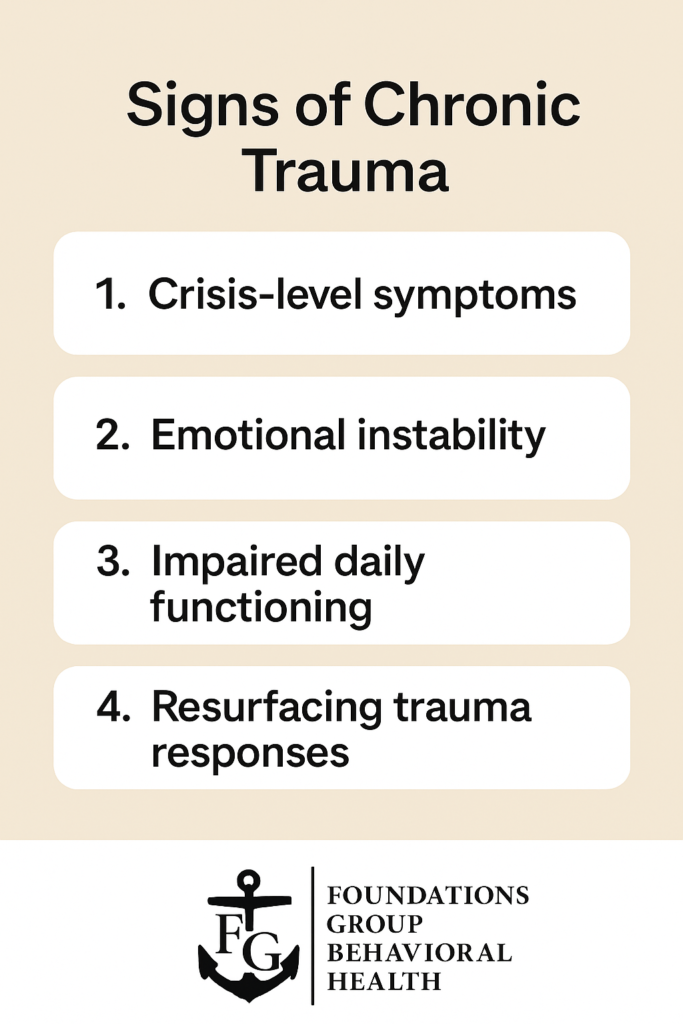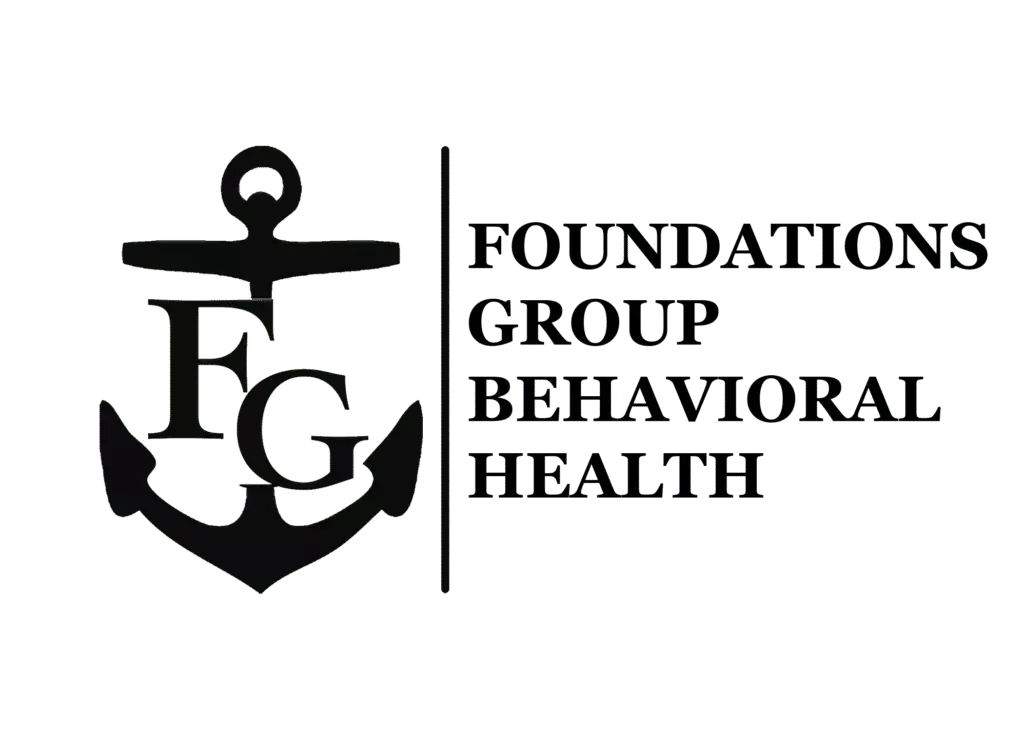You’re a parent watching your child slowly unravel—and you’re terrified.
They show up for therapy. They say all the right things. But when they walk out the door, it falls apart again. They’re spiraling into anxiety, depression, emotional outbursts—and none of it is sticking.
You ask yourself: Why isn’t this working? You feel responsible, fearful, exhausted. You want answers—and a solution that actually helps.
The truth? When trauma runs deep, “just going to therapy”—even faithfully—is often not enough. Trauma treatment needs structure, intensity, and modalities beyond talk.
At Foundations Group Behavioral Health in Massachusetts, we’ve designed trauma care that meets your child where they are—and helps pull them back. Because surviving isn’t enough. They need to live again.
1. When Trauma Becomes Chronic: The Nervous System Holds the Story
Here’s the clinical truth your heart already knows: trauma lives inside your child’s body and nervous system—not just their memories.
They might be calm one minute and dysregulated the next. They might appear to function, but underneath their daily routines, their brain is scanning for danger. That dysregulation shows up as emotional breakdowns, black-and-white thinking, shutdown, or explosive rage.
And here’s the kicker: talk therapy doesn’t calm the nervous system. In some cases, discussing the trauma without tools can retraumatize. It’s like trying to reset a circuit without a screwdriver.
Real trauma treatment rewires the nervous system with intention—using evidence-based methods that help your child feel safe again.
2. Understanding “Insight Therapy” vs. Somatic Healing
Let’s draw a line:
- Insight-based therapy helps your child understand: Why this happened. Why they feel this way. Why it keeps happening.
- Somatic healing helps your child integrate and heal at the bodily and emotional level—not just intellectually.
Think of it like this: your child might know their nervous system reacts before they realize it’s happening. Somatic techniques help them feel the pre-emptive signs of flight, fight, or freeze—then use tools to disrupt the cascade before it takes control.
Without this work, your child might remain highly intelligent about their patterns—but unable to change them.
3. The Build-Up of Partial Treatment: Why Partial Support Can Become Harmful
I don’t say this to scare you—I say it to prepare you.
When your child returns to talk therapy after a crisis, the hold may feel temporary because the root hasn’t changed. They feel understood—then next week, the cycle starts again.
That partial stabilization can lull you both into false hope. Resources get spent. Time ticks. Meanwhile, the neural networks driving trauma are still intact—and still growing stronger.
That’s why trauma-informed programs at Foundations Group use multi-modal care: a layered approach of talk therapy, somatic practices, group skills training, and experiential work. It’s the only way to truly shift a system that’s been holding trauma for years.

4. What Comprehensive Trauma Treatment Looks Like
Here’s what trauma treatment at Foundations Group actually involves:
A. Partial Hospitalization (PHP)
- 5 days a week, multiple hours daily
- Intensive group therapy, skills training, song, art, breathwork, mindfulness, psychoeducation
B. Intensive Outpatient (IOP)
- 3–4 days a week, structured support for integration
- Weekly individual therapy, check-in groups, skill reinforcement
C. Trauma Modalities
- EMDR (Eye Movement Desensitization and Reprocessing)
- Sensorimotor Psychotherapy (body-based processing)
- Dialectical Behavior Therapy (DBT) for emotional regulation
D. Trauma-Informed Clinicians
- Specially trained in adolescent, young adult, and complex trauma
- Commitment to containing and pacing, not flooding
E. Family Integration
- Bi-weekly parent and family education groups
- Clear communication, not blame
- Family support as an asset, not a fix
5. How to Know When It’s Time for a Higher Level of Care
If you’re hesitating, let’s make it clear:
Your child might benefit from trauma treatment—and not just talk therapy—if any of the following apply:
- Crisis-level symptoms (e.g. panic, dissociation, suicidal ideation, self-harm)
- Therapy is consistent, but emotional stability is not
- Medication isn’t bridging the gap
- Daily functioning (school, relationships, chores, sleep) is still deteriorating
- Old trauma responses are resurfacing (e.g. increased shutdown, hypervigilance, emotional flooding)
If you’ve been told they just need more therapy—or more time—think again. You’re doing too much waiting. The time to support them in a way that actually helps is now.
FAQs: What Every Parent Should Know
Q: Isn’t therapy enough if it’s done consistently?
A: Only if it also includes body-based co-regulation, structure, and skills to manage the nervous system. Insight alone won’t interrupt habitual patterns.
Q: My child doesn’t want intensive treatment. How do we make it happen?
A: That’s normal. But sometimes “not feeling ready” is part of trauma’s defense system. We help families navigate ambivalence with clarity, empathy, and logic—not coercion.
Q: How long does trauma treatment take?
A: Most people complete an 8–12 week PHP, then transition to IOP, and eventually a week or two of weekly therapy. Coaching for long-term wellness is included. It’s not forever. It’s structured until the system is rewired.
Q: Will my child feel worse at first?
A: Possibly—as they expose trauma that’s been compartmentalized. That’s why trauma clinicians teach grounding, pacing, and regulation skills before deepening the work.
Q: Will our family be blamed or audited?
A: No. Family involvement doesn’t mean blame—it means better outcomes. Psychoeducation and therapy about relationships help your child feel seen—and family members gain vital tools.
Q: Does insurance cover it?
A: Most major insurance plans offer coverage. We assist with verification and transparency around financial planning.
You’re Doing Everything Right—And We Can Help You Do More
Watching your child struggle while they “only go to therapy” is one of the hardest places to be as a parent.
But your instincts matter.
If things aren’t getting better—or worse, you’re stabilizing them temporarily—then it’s time for trauma treatment that does more than talk.
At Foundations Group Behavioral Health in Massachusetts, we stand ready with a path designed for depth, healing, and real change. We don’t ask you to believe in us—we ask you to trust the process.
Call (888) 685-9730 or explore our trauma treatment program now. Healing is possible—and the time to begin is now.








